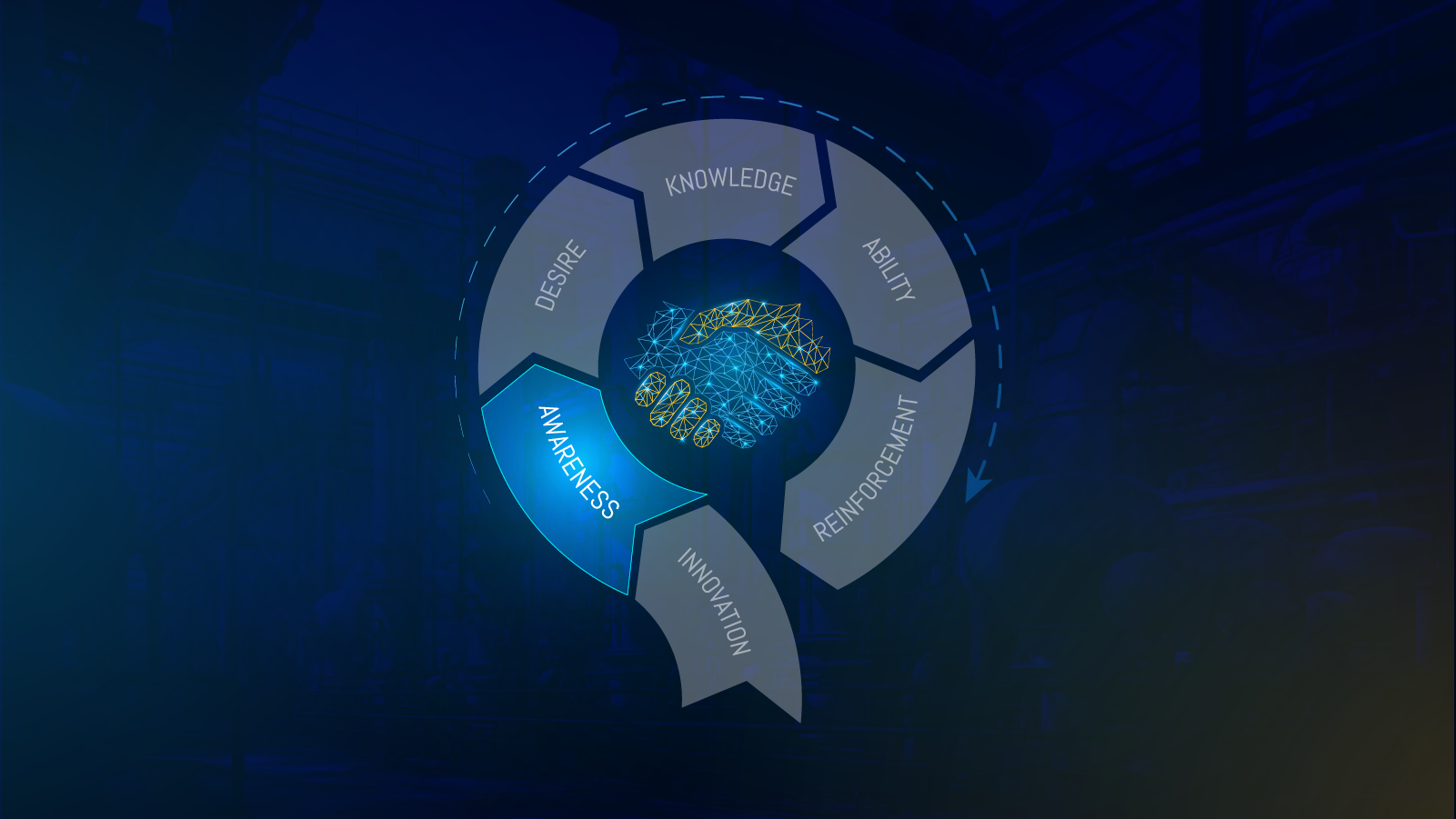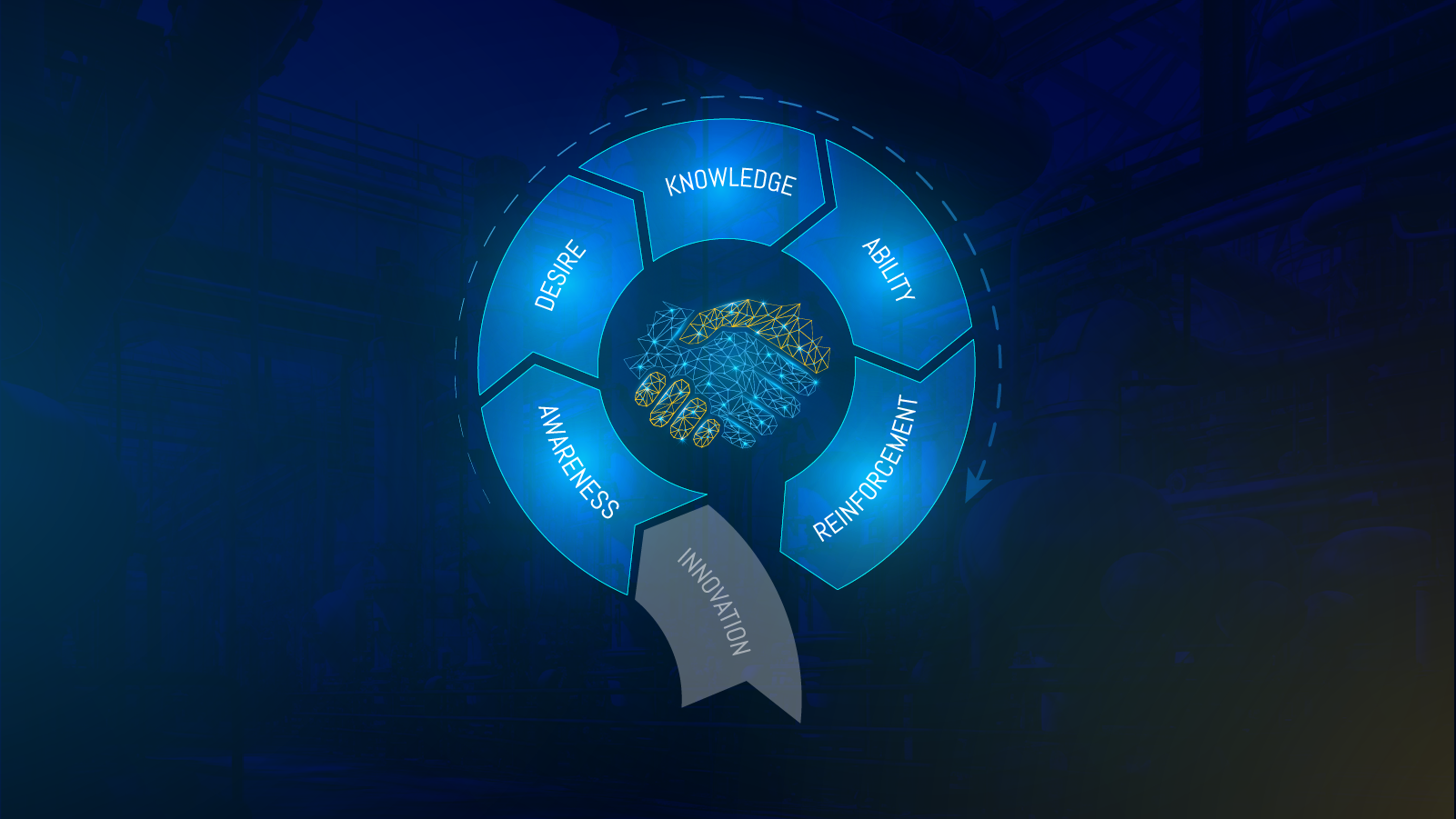Digital Completions in Plant Modifications and Upgrades
Unlike greenfield or any new build construction projects, plant modifications and upgrades present a unique set of challenges. Work is carried out...
3 min read
 Lisa De Vellis, PE
:
Oct 4, 2023 9:00:00 AM
Lisa De Vellis, PE
:
Oct 4, 2023 9:00:00 AM

“Even the most advanced technology can’t achieve anything by itself. Value emerges as a combination of the tool and the people who operate it. Advanced solutions often fail not because they produce erroneous results but because the workforce doesn’t understand, or trust, those results. That’s why successful digital transformations take a people-first approach.” (Hansmann et al., 2022)
MODS and Petrofac co-authored a paper presented at the ADIPEC Exhibition and Conference on November 2nd, 2023 in Abu Dhabi, which proposes the human-led ADKAR change management model to accelerate digital transformation (DX).
Titled Digitally transforming EPC brownfield project execution with AWP: Applying the ADKAR change management model for scalability and improved uptake, the paper argues in favor of user-centric DX for lasting cultural transformation, supported by the following 5-steps:
This blog series dedicates attention to each of the 5 ADKAR steps to accelerate and optimize DX in digital partnership. It is a process that puts people first and one that benefits from working with a vetted digital partner. Join us on this transformative journey through the ADKAR model, as we unravel the significance of each step in the successful uptake of new digital tools.
Whether you're leading a digital transformation initiative or seeking to enhance your team's digital capabilities, this series will provide valuable insights into navigating change effectively in digital partnership for optimum uptake and scalability of your new digital tools.
Awareness is the initial step in the ADKAR model of change management. It is an essential prerequisite for the successful adoption of any change and, especially, for digitalization. Building awareness about the need for change is crucial to open minds to new ways of working.
One of the most ubiquitous challenges in the successful adoption of new technological tools is the idea that things are fine as they are. It is human instinct to shy away from the new, remaining entrenched in familiar ways of working. Human nature ought to be respected. And recognizing that digital transformation is, at its core, a human-centered process, means that any on-the-ground reticence must be tackled to set the stage for a smooth transition to the consistent and effective use of digital tools.
Once people are Aware of the weaknesses in their current ways of working, and of solutions therein, they will be open-minded to change and less reticent to resist it. Knowing and believing, however, are two different things. Cultivating Desire to adopt new technological solutions ought to come easy once the deficiencies are recognized and the solutions are not intimidating. In the absence of Desire for the proposed change, as demonstrated through a brownfield case study, successful uptake is unlikely – we talk about how to address this common pitfall in DX journeys.
In the second part of this blog series, we delve into Desire as the next stage in the ADKAR model of change management to increase the successful uptake and scalability of new technological solutions. It's essential to cultivate a strong Desire for the adoption of new digital tools among your team members. By creating a sense of urgency and enthusiasm, you are more likely to drive successful DX toward scalability and maximum ROI.
Following Awareness and Desire, the next ADKAR step is to educate users on how to adopt the new technological tools as well as how to adapt their ways of working so as to optimize these new tools.
Knowledge is power. So, in this third part of the series, we'll explore why equipping your team with the necessary knowledge is a critical step in adopting new digital tools. We'll discuss how providing the right training and resources can bridge the gap between awareness and ability, ensuring a smooth transition to the digital landscape.
Skilled users make all the difference. Yet, there is also a positive feedback loop wherein software development ought to be informed by user feedback, ensuring the best possible user interface (UI) and user experience (UX). One feeds the other and, hence, user Ability is at the heart of successful digital adoption and the fourth step in the ADKAR change management model.
Discover why empowering your team with the skills and capabilities to effectively use new digital tools is essential for long-term success. We'll explore how hands-on training and ongoing support can turn hesitant users into confident and proficient digital tool champions. When users become ambassadors of their tools, and when user feedback is sought out and respected, DX takes on a life of its own as software and users, together, advance workflows to realize tangible results of efficiency, safety and sustainability.
The positive reinforcement speaks for itself and evolves the transformation from 100 percent uptake to scalability from project to project and from site to site, which leads us to the fifth and final step: Reinforcement.
Sustaining change is just as crucial as initiating it. The fifth and final step in the ADKAR model of change management is Reinforcement, promoting user-informed development for a bottom-up approach that continuously supports the scalability of the technological adoption.
We explore a case study of successful digital adoption in a brownfield context to discuss how creating a positive feedback loop that encourages continuous improvement and user engagement ensures that the adoption of new digital tools remains an integral part of your organization's culture.

Unlike greenfield or any new build construction projects, plant modifications and upgrades present a unique set of challenges. Work is carried out...

Turnarounds and shutdowns are among the most critical—and stressful—phases in the management and operation of industrial assets. These planned...

Offshore decommissioning and asset retirement present significant logistical, regulatory, safety, fiscal and reputational challenges. The process of...

To realize increased efficiencies in construction execution, the ability to adapt to change by onboarding new technologies is paramount....
 Read More
Read More

Managing organizational change for successful digital transformation benefits hugely from a robust digital partnership. Leaning on a change...